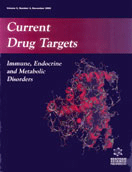Abstract
Follicular thyroid carcinoma (FTC) accounts for approximately 20% of all thyroid cancers, and up to 40% of the deaths associated with this disease. Current treatment approaches include surgery, followed by radioactive iodine therapy. However, a significant proportion of locally advanced and metastatic FTC fails to concentrate iodine. Because traditional chemotherapeutic agents have not been shown to alter outcomes in this disease, novel therapeutic strategies are needed for advanced disease. Recently, a genomic rearrangement has been identified in up to 50% of FTC, involving a translocation event between chromosome regions 3p25 and 2q13. This translocation fuses the thyroid-specific transcription factor PAX8 gene with the PPARγ gene, a ubiquitously expressed transcription factor. We have confirmed that this Pax8 / PPARγ fusion gene (designated PPFP) is an oncogene, which accelerates cell growth, reduces rates of apoptosis and permits anchorage independent and contact uninhibited growth of a thyroid cell line. The action of PPFP arises, at least in part, through its activity as a dominant-negative inhibitor of the wild-type PPARγ transcription factor. Although the mechanism by which PPFP impairs PPARγ activity remains unknown at this time, it is likely to be mediated by competition for the genomic PPARγ response elements, the endogenous ligand, or various cofactors, including the Retinoid X Receptor (RXR). Consequently, modulation of PPFP activity might be possible through the use of PPARγ agonists, RXR-agonists, or specific modulators of PPFP itself. Alternatively, modulation of several down-stream regulatory pathways may become possible, as the consequences of PPARγ inhibition become better known. PPFP represents a potential novel target for the management of advanced FTC.
Keywords: fusion oncogene, follicular thyroid carcinoma, thyroid cancers, radioactive iodine therapy, retinoid x receptor, ppar? agonists
 1
1


















